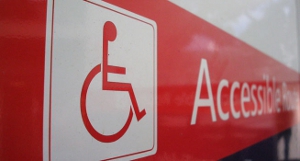Good Accessibility – Here’s How!
Good Accessibility is extremely important. Many people have preconceived ideas about disability. These are generally due to the lack of knowledge or understanding. Here are some guidelines:
Attitude & Awareness
– Make sure to never park in a disabled spot. You never know when someone could need this space.
– Here’s a tip; don’t be concerned about using common expressions which might relate to a person’s impairment, such as “see you later”, “did you hear about?” or “I’ll be running along”. Disabled people don’t want excessive attention brought to them, but neither do they want self-conscious avoidance.
– Move around to the front of high counters or desks
– A person’s wheelchair is usually considered as part of their body space so don’t lean on or interfere with it unless this is appropriate.
Access to Information
– Use bullet points as a way of breaking up information where appropriate.
– Express things positively rather than negatively. Rather than say ‘the office is not open in the afternoon’ say ‘the office is open in the morning only’.
– Avoid technical words, jargon, acronyms and abbreviations.
– Avoid words contracted with apostrophes like ‘don’t’ or ‘can’t’
– Avoid figures of speech, verbal noise and clichés, e.g. ‘at the end of the day’, ‘basically’, ‘taking pot luck’.
– Avoid using quantities unless it is necessary. Use phrases like ‘a few’, ‘a lot’ instead.
– When using numbers, use numerals rather than words in your text, e.g. ‘Each group has 7 people’ rather than ‘Each group has seven people’.
– Write in large text.
– If possible use Braille.
Communication
– Do not use the word “Handicapped” which has a disempowering connotation.
– Audio versions of your document can be useful for people with vision impairments, people with literacy difficulties and people with intellectual disabilities.
– A good website will allow a person with vision impairment to customise web pages to their own needs.
– Videos should have signing from either Irish Sign Language or LÁMH
The Built Environment
– Do not block entryways to apartment buildings or community areas. What may be easy to walk around might be impossible for a walker or perhaps a wheelchair.
– Position street furniture where it will not obstruct access routes.
– Have a tactile paving for people who are partially sighted or who are blind.
Read more: mediabox.ie




